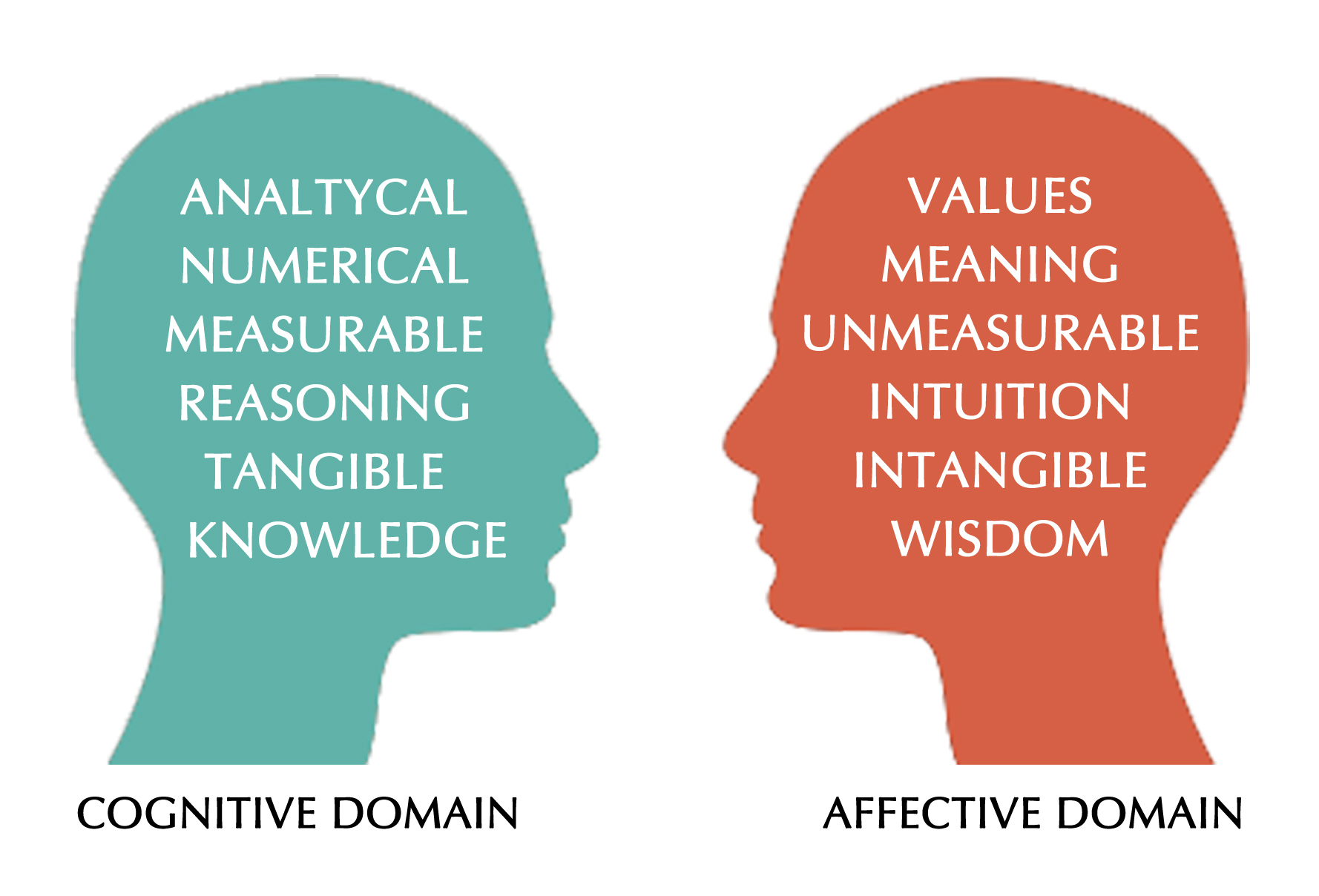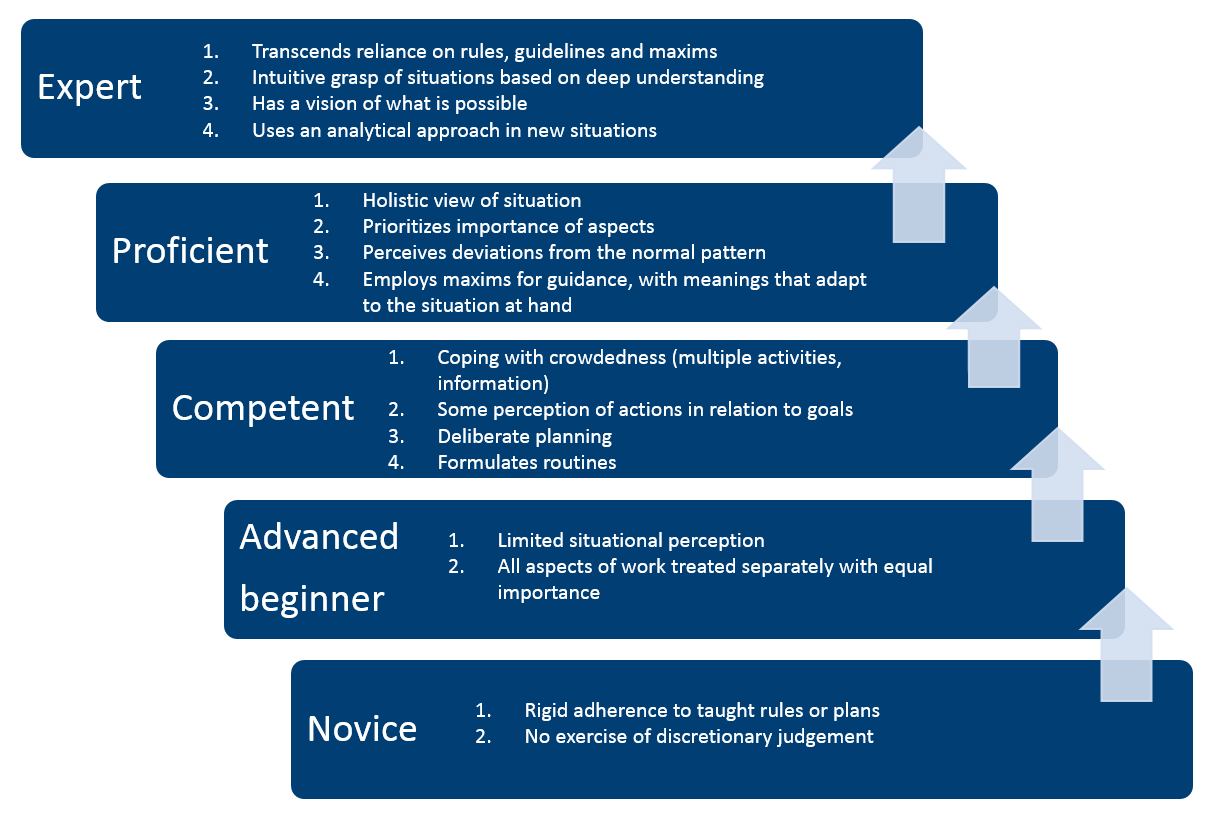Assessing students
| .Ask us. | .Tell us . |
Programmatic models of assessment
There are a variety of models for thinking about assessment: for example, most people know of the Bloom's Taxonomy, and the Miller Model is commonly used to assess clinical learning outcomes.
In this section, we look at some of the programmatic models frequently used in higher education.
..
Bloom's Taxonomy of Learning Domains

Most models have their conceptual roots in 'Bloom's Cognitive' taxonomy.
The collaboration that created Bloom's Cognitive taxonomy also created two other taxonomies: the 'Affective Domain' taxonomy and the 'Psycho-motor Domain' taxonomy.
- The cognitive domain is about thinking / conceptualisation (see Anderson's taxonomy below).
- The affective domain deals with ethics, values and behaviours, which are very hard to measure.
- The Psycho-motor domain deals with physical education: motor / muscular skills and things like expressive movement such as dance.
.
Bloom's cognitive domain (Bloom's Taxonomy 1956)
- Knowledge: Remembering or retrieving previously learned material. Examples of verbs that relate to this function are: know, identify, relate, list, record, name, recognize, acquire
- Comprehension: The ability to grasp or construct meaning from material. Examples of verbs that relate to this function are: restate, locate, report, recognize, explain, express, illustrate, interpret, draw, represent, differentiate
- Application: The ability to use learned material, or to implement material in new and concrete situations. Examples of verbs that relate to this function are: apply, relate, develop, translate, use, operate, practice, calculate, show, exhibit, dramatize
- Analysis: The ability to break down or distinguish the parts of material into its components so that its organizational structure may be better understood. Examples of verbs that relate to this function re: analyze, compare, probe, inquire, examine, contrast, categorize, experiment, scrutinize, discover, inspect, dissect, discriminate, separate
- Synthesis: The ability to put parts together to form a coherent or unique new whole. Examples of verbs that relate to this function are: compose, produce, design, assemble, create, prepare, predict, modify, tell, propose, develop, arrange, construct, organize, originate, derive, write, propose
- Evaluation: The ability to judge, check, and even critique the value of material for a given purpose. Examples of verbs that relate to this function are: judge, assess, compare, evaluate, conclude, measure, deduce, validate, consider, appraise, value, criticize, infer
Adapted from http://www.celt.iastate.edu/teaching/effective-teaching-practices/revised-blooms-taxonomy/
.
Bloom's affective domain
|
Category or 'level' |
Behavior descriptions |
Examples of experience, or demonstration and evidence to be measured |
'Key words' (verbs which describe the activity to be trained or measured at each level) |
|
1. Receiving |
Open to experience, willing to hear |
Listen to teacher or trainer, take interest in session or learning experience, take notes, turn up, make time for learning experience, participate passively |
Ask, listen, focus, attend, take part, discuss, acknowledge, hear, be open to, retain, follow, concentrate, read, do, feel |
|
2. Responding |
React and participate actively |
Participate actively in group discussion, active participation in activity, interest in outcomes, enthusiasm for action, question and probe ideas, suggest interpretation |
React, respond, seek clarification, interpret, clarify, provide other references and examples, contribute, question, present, cite, become animated or excited, help team, write, perform |
|
3. Valuing |
Attach values and express personal opinions |
Decide worth and relevance of ideas, experiences; accept or commit to particular stance or action |
Argue, challenge, debate, refute, confront, justify, persuade, criticize, |
|
4. Organizing or Conceptualizing Values |
Reconcile internal conflicts; develop value system |
Qualify and quantify personal views, state personal position and reasons, state beliefs |
Build, develop, formulate, defend, modify, relate, prioritize, reconcile, contrast, arrange, compare |
|
5. Internalizing or Characterizing Values |
Adopt belief system and philosophy |
Self-reliant; behave consistently with personal value set |
Act, display, influence |
Adapted from http://serc.carleton.edu/NAGTWorkshops/affective/index.html
.
The psychomotor domain
Bloom never completed the Psychomotor Domain. The most recognised version was developed by Ravindra H. Dave.
|
Category or 'level' |
Behavior Descriptions |
Examples of activity or demonstration and evidence to be measured |
'Key words' (verbs which describe the activity to be trained or measured at each level) |
|
Imitation |
Copy action of another; observe and replicate |
Watch teacher or trainer and repeat action, process or activity |
Copy, follow, replicate, repeat, adhere, attempt, reproduce, organize, sketch, duplicate |
|
Manipulation |
Reproduce activity from instruction or memory |
Carry out task from written or verbal instruction |
Re-create, build, perform, execute, implement, acquire, conduct, operate |
|
Precision |
Execute skill reliably, independent of help, activity is quick, smooth, and accurate |
Perform a task or activity with expertise and to high quality without assistance or instruction; able to demonstrate an activity to other learners |
Demonstrate, complete, show, perfect, calibrate, control, achieve, accomplish, master, refine |
|
Articulation |
Adapt and integrate expertise to satisfy a new context or task |
Relate and combine associated activities to develop methods to meet varying, novel requirements |
Solve, adapt, combine, coordinate, revise, integrate, adapt, develop, formulate, modify, master |
|
Naturalization |
Instinctive, effortless, unconscious mastery of activity and related skills at strategic level |
Define aim, approach and strategy for use of activities to meet strategic need |
Construct, compose, create, design, specify, manage, invent, project-manage, originate |
Adapted from http://www.nwlink.com/~donclark/hrd/Bloom/psychomotor_domain.html
.
Bigg's Structure of the Observed Learning Outcome (SOLO) taxonomy
John Biggs developed a Cognitive taxonomy closely related to Bloom's/Anderson's taxonomy - the SOLO taxonomy. People tend to relate to one or the other of these.
Adapted from http://www.johnbiggs.com.au/academic/solo-taxonomy/
.
The Miller model for assessing competence
The Miller Pyramid is very relevant to learning outcomes in clinical competence. In this model, the student developed progressively from gathering knowledge, to being able to interpret and apply that knowledge, to being able to demonstrate knowledge in performance, to - at the highest level - performing in a workplace context.
At the lower levels of the pyramid, the aim is for the students to understand the theory that is the foundation of clinical competence. They develop this understanding from knowledge transmission learning activities, such as lectures, readings, and demonstrations.
At the upper levels, the aim is for them to integrate the theory (intellectual skills), their psychomotor skills, and professional attitudes, to perform as health professionals in different contexts.
![Miller's pyramid [Source: http://www.faculty.londondeanery.ac.uk/e-learning/setting-learning-objectives/some-theory] Miller's pyramid [Source: http://www.faculty.londondeanery.ac.uk/e-learning/setting-learning-objectives/some-theory]](https://lo.unisa.edu.au/pluginfile.php/916694/mod_book/chapter/103501/Miller%20v1.png)
The Dreyfus model of skill acquisition
The Dreyfus model of skills acquisition is based on approaches which work on instruction and experience. In this model, the student passes through five stages:
- novice
- competence
- proficiency
- expertise
- mastery
A skilled student depends more on experience than on principles, and has a fresh view of the task environment in a different way.

Dreyfus, SE & Dreyfus, HL 1980, A five-stage model of the mental activities involved in directed skills acquisition
.